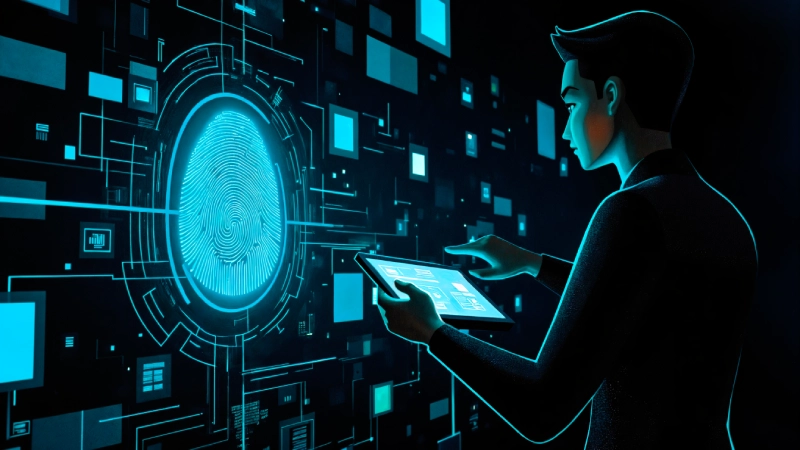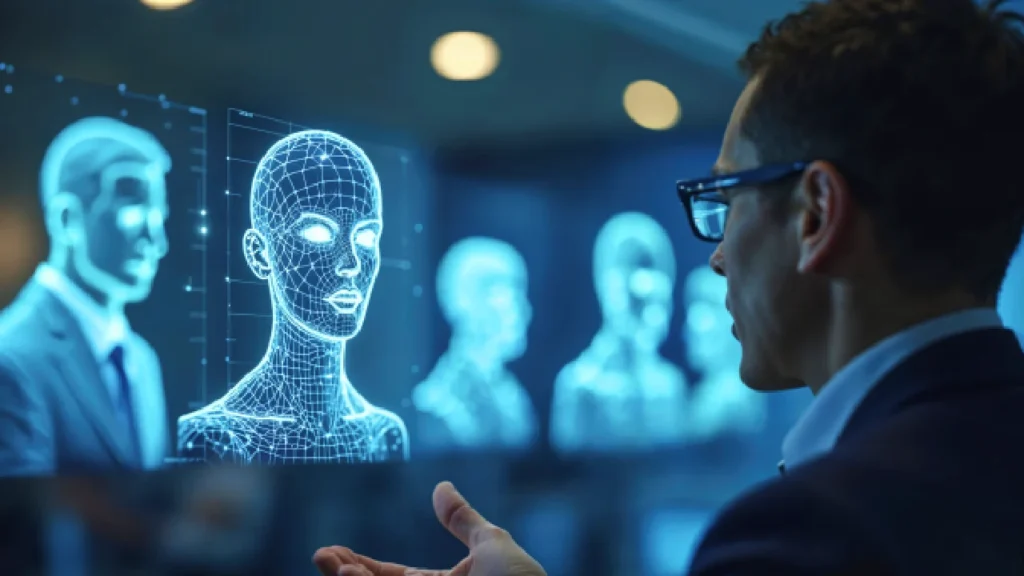Table of Contents
Highlights:
- Deepfake detection utilizes AI techniques to identify malicious media, thereby reducing mistrust and misinformation.
- Using CNNs, RNNs, and biometric signals, detection methods look at synthetic discrepancies.
- Active defence is provided by watermarking and XAI to make things transparent and prevent tampering of content.
The explosion of digital media has brought about an age where determining the credibility of information is a high priority for both individuals and societies. Deepfakes, which are digital materials produced by artificial intelligence (AI), usually videos, images, or sound, are deep learning-algorithm manipulated to change or overlay content that looks authentically new. This advanced fraud, born out of the union of “deep learning” and “fake,” is no longer a new concept but a prevalent phenomenon.

The harmful effect of this technology is strong: it is very easy to access and can be used to ruin reputations, incite political and religious tensions between nations, and even mislead entire nations. The following widespread lack of trust in digital communications has also promoted a cognitive effect known as “Impostor Bias,” in which people find themselves increasingly suspicious about the authenticity of all multimedia content.
A Story of Manipulation
Visual deepfakes represent a core component of this threat, primarily through manipulated images and videos. Methods for generating these convincing fakes often rely on large image and video datasets to train generative frameworks, frequently targeting public figures like celebrities or legislators who have extensive visual material online. The manipulation techniques fall largely into categories such as face-swapping, where one person’s face is replaced with another in a video, and face reenactment, where a source image is used to drive the expression, mouth movement, or gaze of the target individual.
Facial synthesis, another technique, fabricates images that are intentionally created to look authentic and genuine, even though they are wholly fabricated or manipulated, often spreading disinformation across social platforms. The realism achieved by these techniques is such that even commercial face recognition application programming interfaces (APIs) from entities like Microsoft and Amazon have struggled to differentiate between deepfake content and real media.
Countering Deep Fakes
To counter such a nascent threat, the domain of deepfake defence has adopted the use of advanced tools and techniques. Detection mechanisms broadly fall under two categories: passive and active authentication. Passive authentication examines existing media for authenticity by searching for inherent inconsistencies or residuals left behind during the manipulation process and, hence, is primarily applicable to retrospective analysis. Conversely, active authentication is proactive in that it involves the insertion of verifiable information, for example, digital watermarks or cryptographic signatures, into the media at the time of creation, thus making it easier to achieve strong verification before dissemination of the content

The very centre of the defence mechanism depends significantly on deep learning models that have been trained to identify subtle discrepancies that are frequently imperceptible to the naked eye. Convolutional Neural Networks (CNNs) are an essential set of tools, extremely useful for image and video analysis to identify anomalies and patterns used for synthetic generation. Recurrent Neural Networks (RNNs) employ Long Short-Term Memory (LSTM) networks to specialise in temporal data analysis, essential for detecting inconsistencies in facial movements and expressions over a sequence of video frames.
Detecting Normalcy to Detect Fakes
Detection methods are aimed at specific forgery traces left by the generation process. Visual artefact-based detection targets abnormal pixel formations, warped edges, and frequency anomalies. Methods such as frequency domain analysis, using techniques like Fourier transforms and wavelet decomposition, are strong, as they reveal spectral irregularities specific to synthetic media, which is effective even when the media is compressed.
Biological artefact-based detection is another critical path, which uses physiological and behavioural signals that are difficult for deepfakes to mimic naturally. This includes abnormality checks in eye-blinking rates or rPPG signal analysis to identify unnatural skin colour changes due to blood flow, which must be consistent with heart rate patterns. In addition, spatio-temporal coherence techniques verify inconsistencies between modalities, such as the lip movements within a video being perfectly synchronised with the equivalent audio stream.
A variety of specialised tools and architectures have emerged to utilise these detection mechanisms against visual deception. One such architecture is the XceptionNet, a CNN-based scheme that is known to be highly accurate and state-of-the-art performing, particularly on big manipulation datasets like FaceForensics++. To detect fake faces in videos, the lightweight CNN model MesoNet is used due to its computational efficiency and speed in resource-constrained environments.

To address deepfake videos holistically, the TwoStreamNet architecture is compression-artefact resilient, as it examines both visual data (RGB frames) and motion data (optical flow). In its commercial offerings, Sensity AI (formerly Deep Trace) offers deepfake detection that is highly extensive, leveraging a large database of known deepfakes. Intel created FakeCatcher, which targets biometric indicators, namely deepfake detection by tracking physiological signals like heart rate.
More sophisticated models, such as the SRTNet model, improve precision by combining the output spatial and residual spaces of images. GAN fingerprint detection is also essential, given that Generative Adversarial Networks (GANs) imprint stable, distinctive marks in their output, allowing forensic specialists, as Guarnera and others have shown, to identify between 100 variations of the identical model structure, e.g., StyleGAN2-ADA.
Limitations in its Defence
Even with these innovative tools, deepfake defence is trapped in an ongoing arms race. The main challenge is keeping performance in the real-world environments where media is routinely degraded by compression used by social media platforms such as Twitter and Facebook. Lossy compression methods like JPEG and MPEG actively discard information, essentially hiding the faint forensic artefacts required for detection. The danger is exacerbated by the hostile nature of the environment, where malicious users specifically attempt to deceive forensic investigation through advanced adversarial attacks.
The future of deepfake protection will have to focus on ongoing adaptation and openness. Ongoing learning (CL) systems are becoming popular, enabling detection models to retain knowledge of past threats and incorporate new information regarding evolving deepfake methods without experiencing catastrophic forgetting. Explainable AI methods are mandatory in high-stakes use cases such as those in forensic and legal settings.

The XAI system helps models in explaining why content has been marked as fake: this ensures the transparency and interpretability needed to authenticate evidence. Also, at the active defence level, one uses digital watermarks or cryptographic signatures to oppose any alteration of legitimate content, thus considerably cutting down the threat of deepfake spread and constituting a crucial preventive security measure. Commitments to addressing the development of these technologies will ensure that digital content remains untarnished and trustworthy through an increasingly complicated and deceptive media landscape.